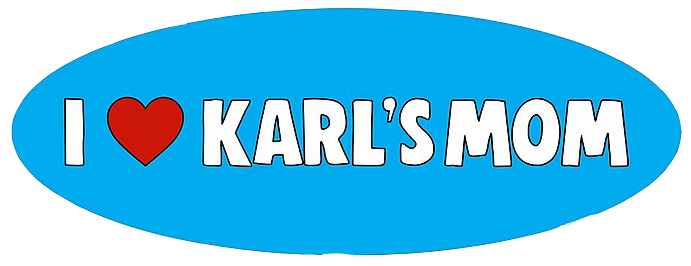Introduction
Definition of Slow Living: Slow living is a lifestyle approach that encourages a slower pace of life, focusing on quality over quantity, being present in the moment, and fostering meaningful connections with others and the world around us.
Brief History and Origin: The concept of slow living originated from the Slow Food movement in Italy during the 1980s, as a response to the fast food culture. It has since evolved to encompass various aspects of life, advocating for a holistic approach to living more consciously and intentionally.
The Need for Slow Living in Today’s Fast-Paced World: In our modern, hyper-connected society, we are constantly bombarded with information, responsibilities, and the pressure to do more in less time. This has led to increased stress, burnout, and a disconnection from what truly matters. Slow living offers a counter-narrative, inviting us to pause, reflect, and choose a different path.
The Philosophy Behind Slow Living
Mindfulness and Awareness: At its core, slow living is about being mindful and aware of our choices, actions, and the impact they have on our wellbeing, relationships, and the planet.
Prioritizing Quality Over Quantity: It encourages us to focus on the quality of our experiences, possessions, and relationships, rather than accumulating more.
Embracing Simplicity: Slow living embraces simplicity, finding beauty and contentment in the ordinary and everyday moments.
Building Stronger Relationships: By slowing down, we create space to nurture and deepen our connections with family, friends, and our community.
Sustainable and Ethical Choices: Slow living also involves making sustainable and ethical choices, considering the long-term impact of our actions on the environment and society.

The Benefits of Slow Living
Improved Mental Health: Adopting a slower pace of life has been linked to reduced stress, anxiety, and depression, contributing to overall better mental health.
Better Physical Health: Slow living promotes practices that are beneficial for our physical health, such as mindful eating, regular exercise, and adequate rest.
Stronger Relationships: When we slow down, we have more time and energy to invest in our relationships, leading to stronger and more meaningful connections.
Enhanced Productivity and Creativity: Contrary to popular belief, slowing down can actually lead to enhanced productivity and creativity, as it allows our minds to rest and rejuvenate.
A Deeper Connection with Life: Slow living fosters a deeper sense of connection and appreciation for life, helping us to find joy and fulfillment in the present moment.
Practical Ways to Adopt Slow Living
Decluttering Your Space: A cluttered space can lead to a cluttered mind. By decluttering our physical surroundings, we create a more peaceful and calming environment.
Mindful Eating: Slow living encourages us to be mindful of what we eat, how we eat, and the impact of our food choices on our health and the planet.
Incorporating Slow Movement: Engaging in slow, intentional movement, such as yoga or walking, helps to calm the mind and strengthen the body.
Creating Technology-Free Zones: Designating certain times or areas in our homes as technology-free zones can help to reduce distractions and create space for connection and reflection.
Embracing Nature: Spending time in nature has numerous benefits for our mental and physical health, and is a key component of slow living.
Prioritizing Self-Care: Taking time for self-care is essential for our wellbeing, and slow living encourages us to prioritize these practices.
Learning to Say No: In order to slow down, we must learn to set boundaries and say no to commitments that do not align with our values or priorities.
Overcoming Challenges and Misconceptions
Addressing Common Misconceptions: There are many misconceptions about slow living, such as it being unproductive or only accessible to certain people. Addressing these misconceptions is key to embracing slow living fully.
Navigating Challenges: Adopting a slow living lifestyle can be challenging, especially in a society that values busyness and productivity. However, by taking small steps and staying committed, it is possible to navigate these challenges.
Balancing Slow Living with a Busy Lifestyle: Slow living does not mean doing nothing. It is about finding balance and being intentional with our time and energy, even in the midst of a busy lifestyle.

Real-Life Stories: Transformations through Slow Living
Personal Narratives: Sharing real-life stories of individuals who have transformed their lives through slow living provides inspiration and practical insights.
Insights and Lessons Learned: These narratives highlight the challenges and rewards of adopting a slow living lifestyle, offering valuable lessons for others on the same journey.
Resources for Further Exploration
Books: There are numerous books on slow living, mindfulness, and intentional living that provide in-depth knowledge and guidance.
Websites and Blogs: Many websites and blogs are dedicated to slow living, offering articles, tips, and community support.
Communities and Workshops: Joining a community or participating in workshops can provide hands-on experience and connect you with like-minded individuals.
Conclusion
Recap of Key Takeaways: Slow living is a transformative practice that encourages us to live more intentionally, fostering better health, stronger relationships, and a deeper connection with life.
Encouragement to Embrace Slow Living: We are all capable of adopting a slow living lifestyle, regardless of our current circumstances. It starts with a choice to pause, reflect, and prioritize what truly matters.
Final Thoughts: Embracing slow living is a journey, not a destination. It is a continuous practice of choosing to live in alignment with our values, finding joy in the present moment, and creating a life filled with meaning and purpose.












What do you think?
It is nice to know your opinion. Leave a comment.